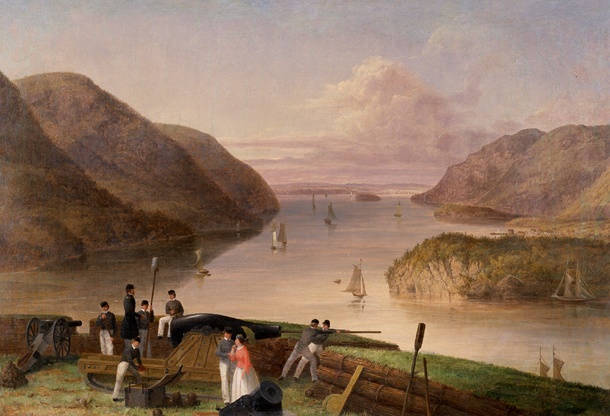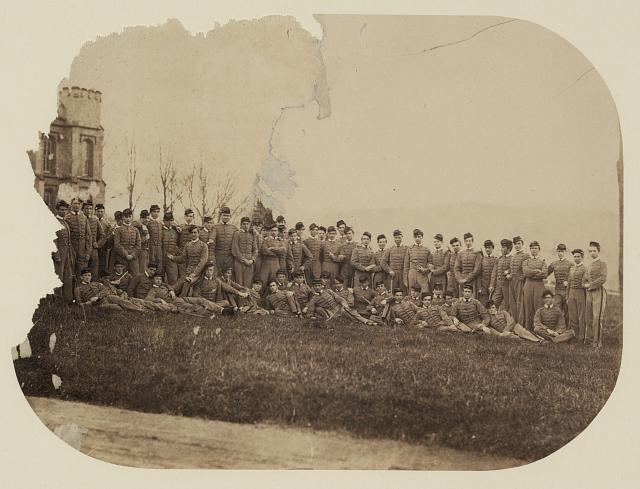Class of 1842
When reading a biography of a Civil War general officer, the usual biographical sketch is: West Point Military Academy educated, Mexican War experience, volunteer organization command in early stages of the war, and then the rise through the general officer ranks. Of course there are exceptions to this rule, but for the sake of this post, we are going to explore that rule.

One of the most famous classes to come through West Point and the subject of complete book, is the Class of 1846. Such luminaries as George McClellan, Thomas J. “Stonewall” Jackson, A.P. Hill, George Pickett, Darius Couch, Jesse Reno, George Stoneman, and a slew of other Union and Confederate officers. Truly indeed, this class shaped different aspects of how the Civil War unfolded.
This post is not about that class. I would like to raise the point that the Class of 1842 had an even bigger impact on the war. For all the “Stonewall” fans, hear me out first.
For the generals that donned Union blue during the War of the Rebellion, 1842 graduates include Major Generals William S. Rosecrans, Abner Doubleday, George Sykes, John Newton, and John Pope. There was also a future inspector general, Seth Williams and one brigadier general Napoleon Dana.
For the generals that cast their lot with the Southern Confederacy, you have Lieutenant Generals James Longstreet, Alexander P. Stewart, D.H. Hill (who served in that rank temporarily). Major Generals included Gustavus Smith, Mansfield Lovell, Lafayette McLaws, and Earl Van Dorn. Brigadier Generals Manton Smith and George W. Rains also graduated that year.
To continue this healthy debate, let’s draw some comparisons.
On the Union side, we have one army commander in each class; William Rosecrans (Class of 1842) and George McClellan (Class of 1846). To be completely fair, McClellan was commander-in-chief for a duration of time in 1861-1862.
John Pope, also of the Class of 1842, although disastrously, did lead an army in Virginia in 1862 after leading an independent command to subdue Island #10 early that same year.
Earl Van Dorn (42), also commanded an army in the disastrous Corinth Campaign of September – October 1862 as well as being in command of the Trans-Mississippi and serving in a leadership capacity in the cavalry.
One could possibly win a trivia contest with one of the graduates in the Class of 1842; Gustavus Woodson Smith commanded what would become the Army of Northern Virginia for one day–May 31,1862–in between the wounding of Joseph Johnston and the appointment of Robert E. Lee.
On the Confederate side the Army of Northern Virginia’s first two corps commanders are represented in both classes, James Longstreet (42) and Thomas “Stonewall” Jackson (46).
Then the other corps commanders that wore gray; D. H. Hill, A.P. Stewart, both in 1842 and A.P. Hill in 1846. For those who were blue, Darius Couch, Jesse Reno, George Stoneman (46) and George Sykes and Abner Doubleday (42) were corps commanders.
Dropping down a command level, there is a slew of division commanders for the United States includes John Newton (42), Samuel Stugis (46), John Gibbon (46), and George H. Gordon and John Foster (46, both served as commander of various military departments), Dabney Maury (42) who served as a division commander under Van Dorn, along with Richard Anderson (42), Mansfield Lovell (42), Lafayette McLaws (42), David R. Jones (46), and Cadmus Wilcox (46), and George Pickett (46), last just like his standing in the class, were the Confederate major generals!
Three members of the class of 1842 served in roles of responsibility–Seth Williams. mentioned above, as inspector general of the United States Army and Martin L. Smith, who helped construct the Confederate defenses at Vicksburg and later plied his craft as chief engineer of the Confederate Army of Northern Virginia. George W. Rains (whose brother Gabriel might be better known for his work with the Confederate Ordinance Department) made advances in gunpowder production for the Confederacy.
Lastly, the gentlemen who rose to brigade command included Napoleon Dana (42), James Oakes (46) for the North and John Adams (46), William Gardiner (46), and Samuel Maxey (46).
When arrayed through the different layers of general officers, the Class of 1842 is studded with gentlemen who rose to prominence in the Civil War. Although it lacks the household names of McClellan and Jackson, the earlier class can counter with Rosecrans and Longstreet. Across the board, the Class of 1842 deserves to be recognized for its contributions to American military history.
What class do you think deserves more recognition?

The graduating class of 1853 wasn’t too shabby. Notable graduates were John Bell Hood, James McPherson, John Schofield and Philip Sheridan, plus 11 Brigadier Generals. Of these Sheridan and Schofield rose to be Commanding Generals of the U.S. Army.
Excellent post. In addition to 1842 and 46, I’d throw in 1915 (“The Class the Stars Fell On”) and 1936 (Westmoreland, Palmer, Abrams, and many generals of the Vietnam era who fought three wars in 40 years).
Geo W. Rains never made it to brigadier general. He never signed a document that way, and after the war referred to himself as a colonel. The word was he was nominated but it was no confirmed, but I am not convinced that was even the case. He deserved an entire paragraph here. But for his accomplishment in building the Augusta Powder Works, you would never have heard of the name of most of these men-and R. E. Lee, Jackson, Sherman, Grant, etc. would be relegated to footnotes.